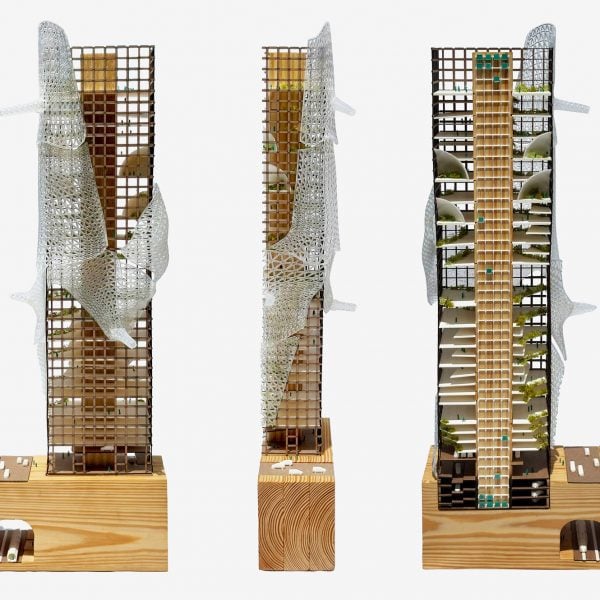Dezeen School Shows: a project commenting on the impact of Covid-19 on the conservation of offices is included in Dezeen’s latest school show by students at Tulane University.
Also included is a project utilising inflatable technology to mitigate flooding and another that creates infrastructure systems for ecological restoration.
Institution: Tulane University
School: Tulane School of Architecture
Courses: ARCH 5990/6990 – Thesis Studio
Tutors: Cordula Roser Gray, Todd Erlandson, Ammar Eloueini, Margarita Jover, Rebecca Choi, Adam Marcus, Liz Camuti, Jesus Meseguer Cortes, Nicholas LiCausi, Jesse Toohey and Austin Lightle
School statement:
“The Tulane School of Architecture in New Orleans generates and applies knowledge that addresses urgent challenges of humankind.
“We do this by educating committed professionals to creatively manage complexity and transform the world through the practices of architecture, urbanism and preservation.
The five-year Bachelor of Architecture (BArch) and the graduate Master of Architecture (MArch) prepare students with advanced skills in the areas of history, theory, representation and technology.
“Our extensive network of alumni lead successful careers in various fields related to the built environment and design.
“The thesis projects presented below address a clear subject matter, identify actionable methods for working and generate knowledge relative to their findings that ultimately contribute to architectural discourse.
“In the fall 2023 semester, students conducted research and process work that led to designing a project according to crucial principles and parameters embedded within the discipline of architecture.
“The outcome of these activities is considered an architectural thesis – a competent, complex design proposal that contributes meaningfully to current and historical discussions in architecture and society presented in the spring 2024 semester.
“Throughout the process, students were guided by faculty thesis directors.”

Alluvial City: Port Towns as Catalysts for Regenerative Industrial Landscapes by Frank Taylor and Jose Varela Castillo
“This thesis investigates Morgan City, Louisiana, where urban hierarchies have created a built environment maximised for industrial efficiency despite the region’s proud connection to its surrounding ecology.
“In order to move past the rigid hierarchies that define Morgan City’s industrial maximisation, adapted urban conditions are sequentially generated, first by carving the river edge through the dredging of sediment and then by the natural dynamics of the river.
“The rescaping results in a blurred gradient of wetlands, elevated industrial zones and recreational structures.
“This process ultimately aims to transition Morgan City’s past extractivist cultural underpinnings into a site of flattened hierarchies, allowing for symbiotic relationships between community, industry and ecology to evolve.”
Students: Frank Taylor and Jose Varela Castillo
Course: ARCH 5990 – Undergraduate Thesis
Tutors: Cordula Roser Gray and Todd Erlandson
Email: ftaylor5[at]tulane.edu and jvarelacastillo[at]tulane.edu
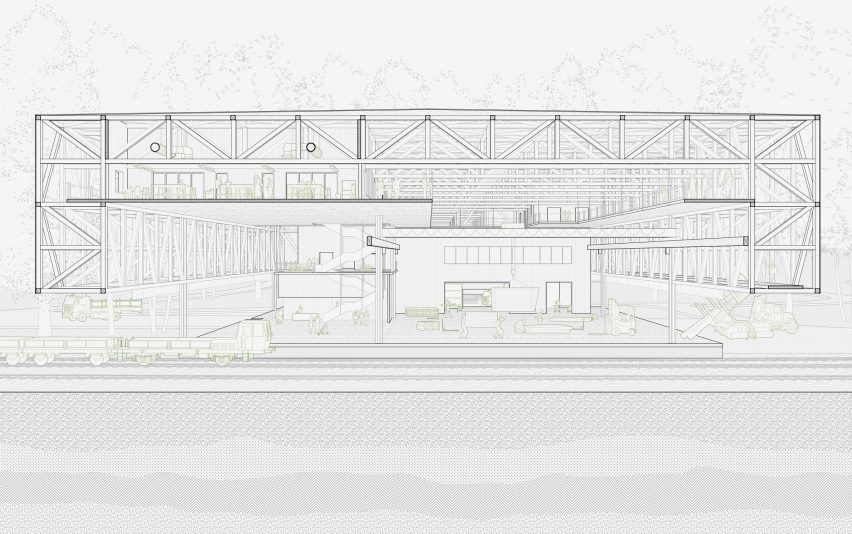
Industrial Futures in Timberland by Sarie Keller and Olivia Vercruysse
“In envisioning a future for former timber towns, this thesis designs the forest and the built environment as a unified system to support mass timber as a catalyst for economic recovery and environmental healing.
The urban and architectural proposal for an engineered wood plant conceptualises the building footprint as an extension of the contextual envelope.
“Situated on former mill sites with existing adjacencies to both river and rail, a series of timber superstructures allow for the integration of both industry and tourism – visitors engage with the process of mass timber manufacturing from above by inhabiting the double-layer truss system of the re-invented canopy.
“The long spans offered by the series of trusses leave the ground floor open for industry while also creating a human-scaled experience among the members.
“The investigation of tectonic laminated timber through the lens of the forest and their timber communities is fuelled by an ambition to better understand building lifecycles – from resource harvesting to occupation and disassembly.”
Students: Sarie Keller and Olivia Vercruysse
Course: ARCH 5990 – Undergraduate Thesis
Tutors: Cordula Roser Gray and Todd Erlandson
Email: keller.sarie[at]gmail.com and vercruysse.olivia[at]gmail.com
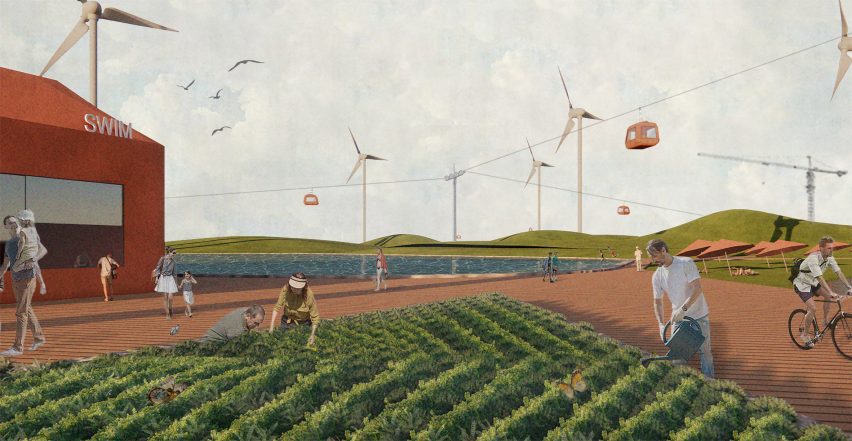
This Land is Your Land: Optimising Sixteenth Section Land Use in Mississippi by Anna Kathryn Becker and Lauren Lake
Section 16 Public Trust Land constitutes a vital resource dedicated to the preservation of public education nationwide – in Mississippi, there are 640,000 acres of Section 16, each one square mile within the Jeffersonian Grid.
“Lease options range from agriculture, industry, commerce, farming, residential, recreation, oil, gas and minerals, with all lease proceeds benefiting the public school system – however, historical exploitation and neglect have scarred these lands and surrounding environments.
“Our thesis endeavours to reclaim these parcels, revitalising their original purpose to enrich our communities, proposing a new spatial model that breaks the traditional Jeffersonian grid by prioritising recreational, clean industrial and educational synergies.
“By fostering partnerships between these sectors, we not only increase revenue streams for the public school system, but also champion initiatives such as carbon capture, sustainable production and enhanced social infrastructure, restoring the integrity of Section 16 Land and leveraging its potential to transform communities citywide, producing a healthier and more vibrant environment for all.”
Students: Anna Kathryn Becker and Lauren Lake
Course: ARCH 5990 – Undergraduate Thesis
Tutors: Cordula Roser Gray and Todd Erlandson
Email: annakathrynbecker[at]gmail.com and laurenlake001[at]gmail.com
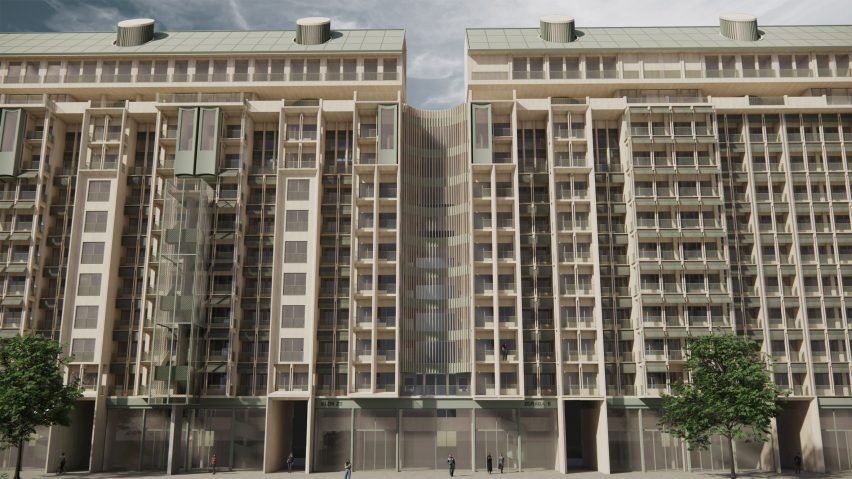
Towards Energy Sovereignty: A case for retrofitting modernist Block 23 in New Belgrade by Kosta Šević
“This thesis advocates for the retrofit of Block 23 in New Belgrade – a significant modernist neighbourhood built during Yugoslavia’s era – as a response to pressure from neoliberal development.
“It proposes a sustainable reinterpretation of modernist architecture to address current needs, such as housing shortages, energy efficiency and the rejuvenation of communal spaces.
“The renovation aims to achieve energy self-sufficiency and expand housing through a public-private partnership in energy, utilising renewable sources like geothermal, biomass, solar and wind energy.
“Using locally sourced timber for its reconstruction, the project focuses on integrating renewable energy, reconfiguring building systems and expanding residential units and public amenities to create an inclusive, multi-generational community.
“This approach imagines a future in which sustainability, energy independence and social equality are central to urban development and an integrated part of the city fabric.”
Student: Kosta Šević
Course: ARCH 6990 – Graduate Thesis
Tutors: Margarita Jover and Jesus Meseguer Cortes
Email: ksevic[at]tulane.edu and kosta.sevic[at]outlook.com
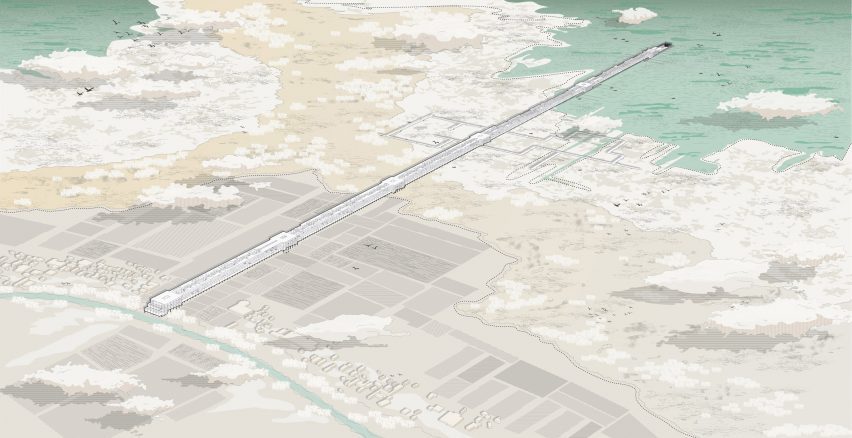
Tidal Shift: Towards Post-Anthropocentric Futures for Coastal Louisiana by Amanda Bond and Chelsea Kilgore
“Industrialisation, colonisation and globalisation have anthropocentrised coastal Louisiana’s occupational strategy, furthering the exploitation of land, the disruption of natural systems, the over-extraction of resources and the acceleration of the climate crisis, all in favour of the human.
“The design of a post-anthropocentric coastal model speculates on a future epoch that allows the earth to heal through the consolidation of settlement, the modification of the occupational datum and the regeneration of the land – the human is ultimately recognised as an interdependent species rather than domineering.
“Tidal Shift aims to question what it would take, as a human species and design profession, to re-imagine the ways we live, so that we can then change our collective human impact on the planet.”
Students: Amanda Bond and Chelsea Kilgore
Course: ARCH 5990 – Undergraduate Thesis
Tutors: Cordula Roser Gray and Todd Erlandson
Email: amanda.bond.2001[at]gmail.com and ckilgore126[at]gmail.com
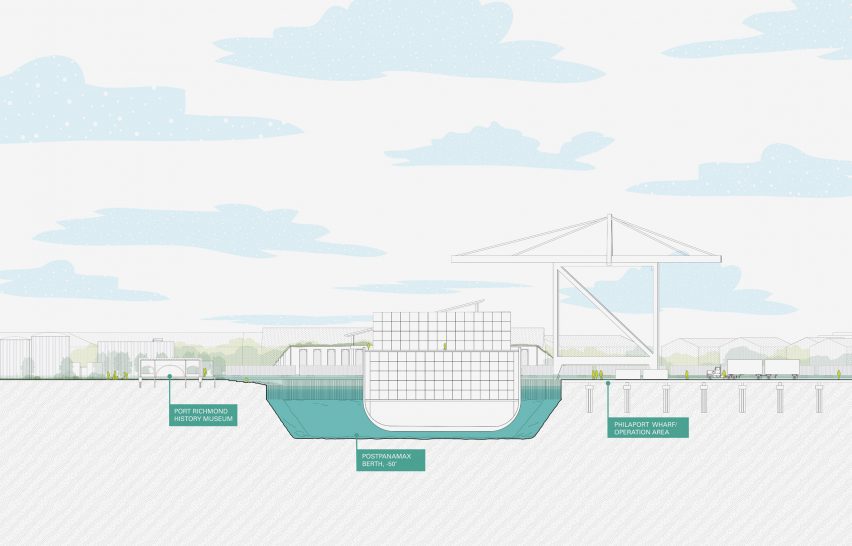
Insistent Processes by Allison Slomski
“A general lack of inclusion of industrial processes in climate resilience planning, compounded by their local-regional economic importance, makes industry particularly vulnerable to climate hazards.
“The thesis, using one of Philadelphia’s port terminals as a case study, proposes the reconceptualisation of an industrial waterfront area as an ‘eco-industrial ward’, a park-like management system that balances industrial, ecological and civic needs with green infrastructure strategies.
“Through adaptive, collaborative monitoring and maintenance processes backed by private-public partnerships, the eco-industrial ward is intended to improve public access to the Delaware Riverfront, combine environmental remediation and ecological restoration with flood mitigation strategies and preserve and enhance the economic performance of industrial site actors.”
Student: Allison Slomski
Course: ARCH 6990 – Graduate Thesis
Tutors: Margarita Jover and Liz Camuti
Email: allisonslomski[at]gmail.com
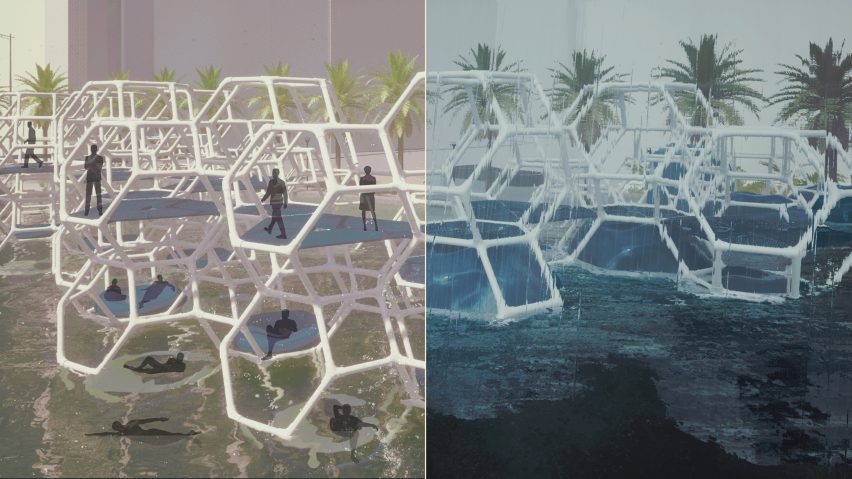
Edge of Tomorrow: A Replicable Model for Flood Protection by Max Kronengold and Jeremy Goldberg
“Sea level rise and storm surge floods create drastic changes to urban coastlines around the world and redefine how millions of people interact with the threshold between water and land.
“Downtown Miami has few connection points for pedestrians to interact with the adjacent Biscayne Bay and the low seawall along the city’s edge is not sufficient to stop heavy inundation.
“An opportunity arises for a new flood protection system that maintains the possibility for human connection to the water while providing ample flood protection when needed.
“Edge of Tomorrow is a modular, deployable system that prioritises permeability of sight and human habitability – its inflatable technology mitigates flooding when needed and redefines how pedestrians experience the edge.”
Students: Max Kronengold and Jeremy Goldberg
Course: ARCH 5990 – Undergraduate Thesis
Tutors: Cordula Roser Gray, Rebecca Choi and Todd Erlandson
Email: kronengoldmax[at]gmail.com and jigoldberg44[at]gmail.com
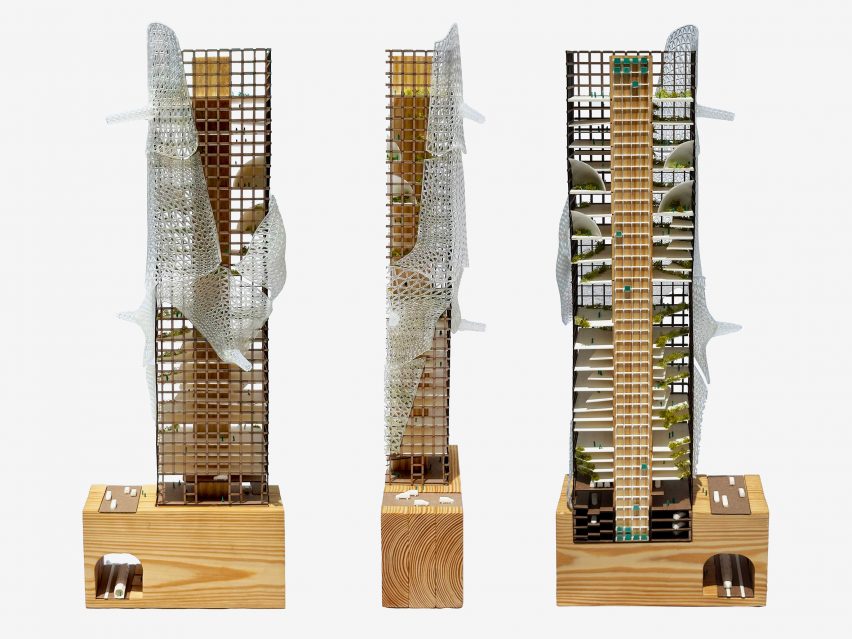
Noosphere II: A Battery for the Modern Metropolis by Fiona Alicandri and William Trotter
“With a surplus of vacant office space as a persisting consequence of the Covid-19 pandemic, research indicates that reuse efforts solely prioritise residential conversion.
“This model argues that there are additional programmatic opportunities not being explored for these vacant spaces.
“Noosphere II proposes transforming vacant office towers into ‘urban batteries’ that recharge the social and ecological deficiencies of the metropolitan condition through hubs of transportation, socialisation and environment.
This urban epicentre of science, art, culture and nature provokes an untested merger of community program and ecologically-oriented infrastructure.
“In establishing a multi-block sustainable microgrid, a vertical park, a transit hub and physical connections to its direct context, the model seeks to reintroduce nature to the places that humankind needs it most.”
Students: Fiona Alicandri and William Trotter
Course: ARCH 5990 – Undergraduate Thesis
Tutors: Cordula Roser Gray, Todd Erlandson, Jesse Toohey, Nicholas LiCausi, Adam Marcus and Austin Lightle
Email: fionaalicandri[at]gmail.com and willleotrot[at]gmail.com
Partnership content
This school show is a partnership between Dezeen and Tulane University. Find out more about Dezeen partnership content here.

